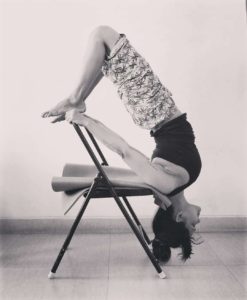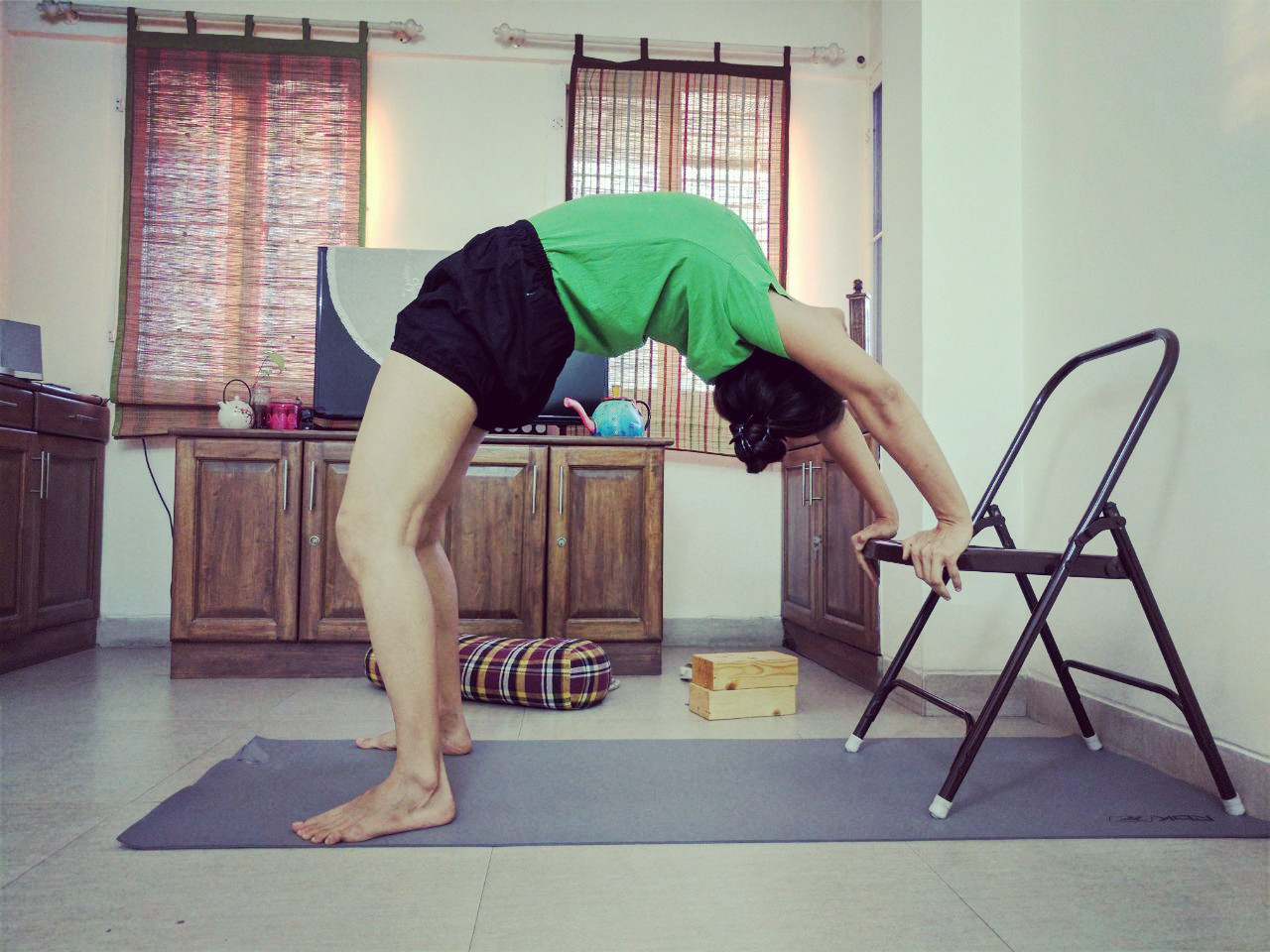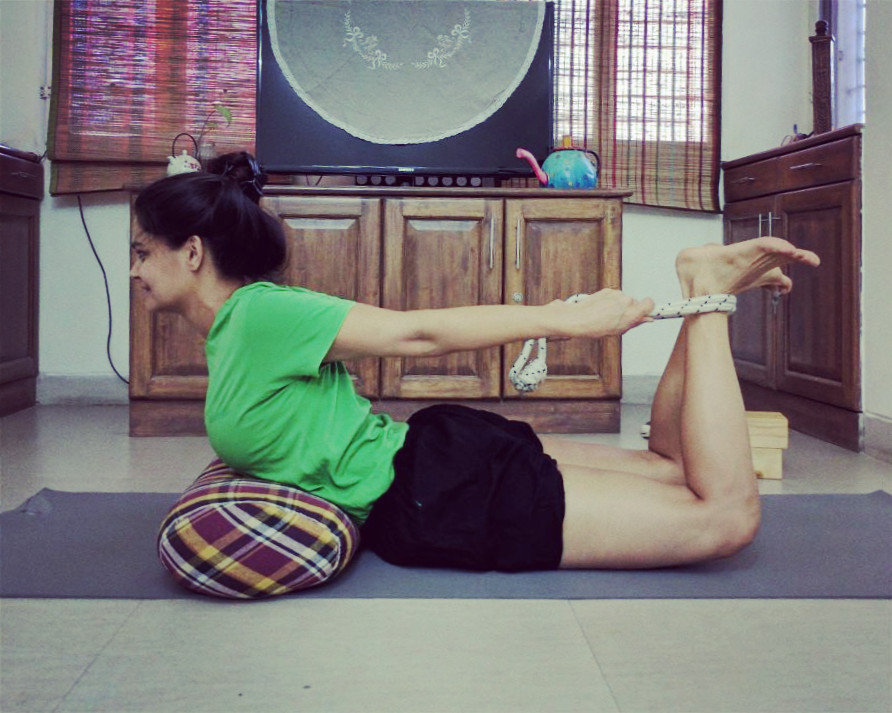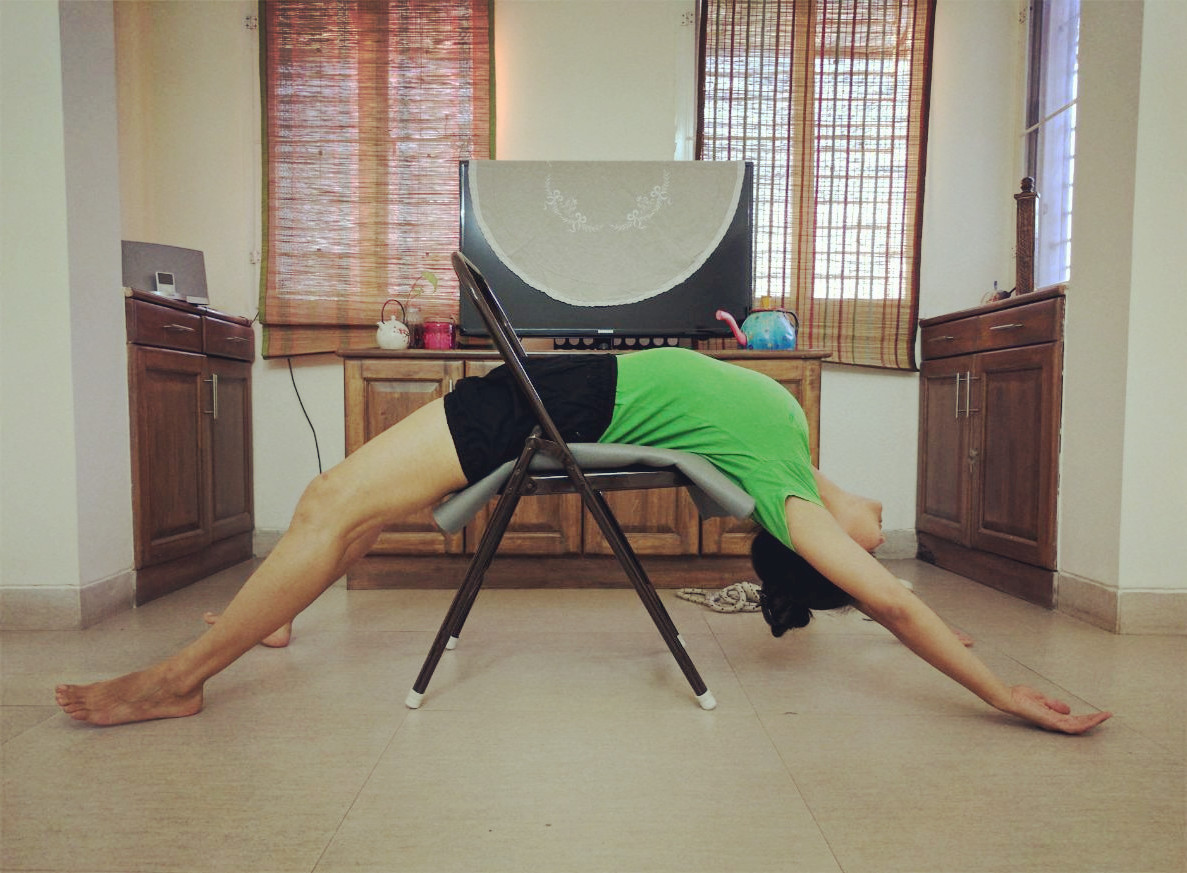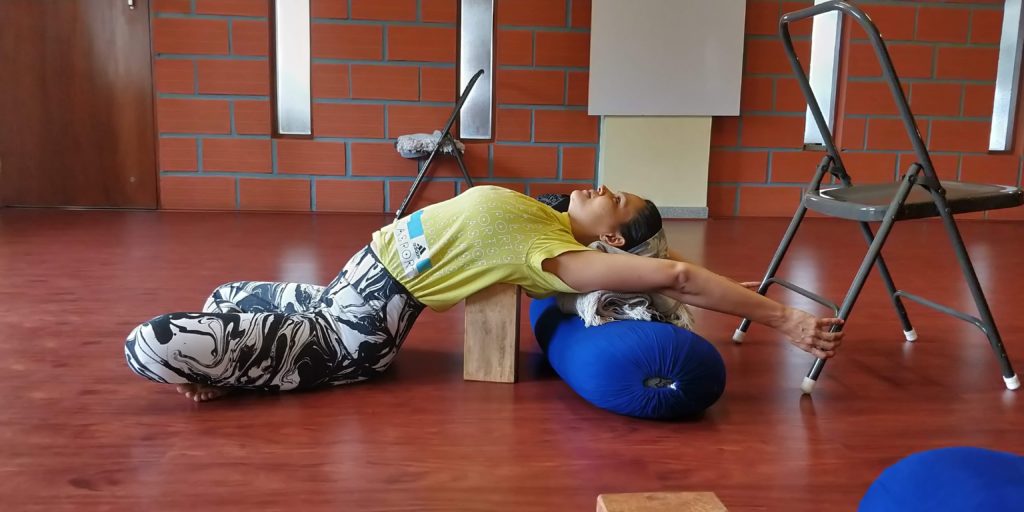
Props galore at an informal practice session at Amrutha Bindu Yoga.
After watching my yoga class recordings on YouTube, many have reached out to me about yoga props. Whether they are required, what kind, which ones should one get? Most of my students did not have props before they joined my classes, in fact, most of them bought props once our classes went online. I guess most of them saw the usefulness of buying props and have seen a noticeable improvement in their practice. I’ve built my collection of props over the years and sourced them from many different places. My students and I have also been trying different props and brands for years and now know what works and what is likely not to work.
Yoga Mat
This is the prop we use the most, no wonder so many people ask me about it. I use several mats. The oldest and dearest one is by Reebok and I’ve had it forever, so I think it’s out of production. In addition to this I use a cloth mats. I have one from my teacher training days at SVYASA, and another beautiful mat from Deivee. The yoga mat I would personally recommend is this one from Decathlon. It sells out fast and I personally know many people who use and love it. Plus Decathlon always seems to have them in stock.
Blocks/Bricks
Blocks/bricks are very versatile, and come in many varieties. I started out with foam blocks from Decathlon, and then eventually expanded my collection to include wooden blocks. I recommend getting blocks in different sizes because there are so many creative ways you can use them. I know many people who use these cork blocks and are very happy with them. You can also check out SVECH for some more cork blocks.
Belt/Strap
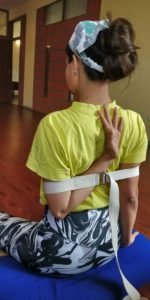
Use a belt to improve Gomukhasana.
Many years ago I told a student that the one prop I would recommend always keeping with you (including when you travel), is the yoga belt. It can help you lengthen, twist, bind, bend forward, bend back…and much more. To ensure your skin doesn’t chaff, your yoga belt should be made of cotton. Another thing to ensure is that the buckles are strong to hold the belt securely in place.
I recommend the yoga belt from MeFree.
Chair
Everyone wants the chair and it’s the most difficult prop to come find! The chair can be used in almost every yoga pose. When students first start practice with me, I tell them to use any chair which is stable, has a straight back and no armrests. But eventually you should get the metal chairs. There are certain characteristics of the chair that make them apt for yogasanas – they have legs that you can hold for pinchamayurasanas, you can invert yourself safely in halasana and sarvangasana, you can even use two chairs and do a safe headstand!
Amazon doesn’t have enough variety when it comes to yoga chairs, and it’s always tricky to find a good yoga chair. I found this one by the Friends of Meditation, and one of my students actually uses it. I would suggest this yoga chair by MeFree too, since some of my students have bought their products and are very happy with them.
You can explore more yoga props at SVECH and MeFree
When the lock down started many of my students wanted to buy props. But they were either sold out or companies weren’t delivering. I contacted Mr. Raju here in Bangalore and he was kind enough to supply the props to us. You can contact him on +91 9242286651. I believe he ships to different parts of India too.
If you have any more questions about props, do reach out to me.
